How to use a Weissgauff dishwasher
 A dishwasher is no more difficult to handle than any other household appliance. However, before you start using the device, you should study a number of nuances that will make operation more efficient. Let's figure out how to properly launch the PMM, load the dishes, and what household chemicals to choose.
A dishwasher is no more difficult to handle than any other household appliance. However, before you start using the device, you should study a number of nuances that will make operation more efficient. Let's figure out how to properly launch the PMM, load the dishes, and what household chemicals to choose.
Detergent and other products
Having bought a “home assistant”, do not rush to start it right away. It is important to understand how to properly use a Weissgauff dishwasher. There are subtleties in handling the device that you need to know about.
The dishwasher comes with instructions. Study the user manual - it contains all the information, from rules for installing the machine to recommendations for loading dishes and choosing washing programs. If you bought used equipment and the booklet is lost, all the information for a specific model can be found on the Internet.
It is recommended to call a specialist to install the machine. The specialist will connect the PMM to the water supply and sewerage system and integrate it into the furniture set, if necessary. Some manufacturers void the warranty if users connect the dishwasher themselves.
Before using the dishwasher, you should figure out what products it will require and purchase them. For the machine to work, you need:
- dish cleaner;
- salt;
- rinse aid
Salt is needed to soften tap water. Before starting the PMM, it is necessary to set the hardness level so that the machine optimally consumes salt crystals. How to make the settings is stated in the instructions for the Weissgauff dishwasher.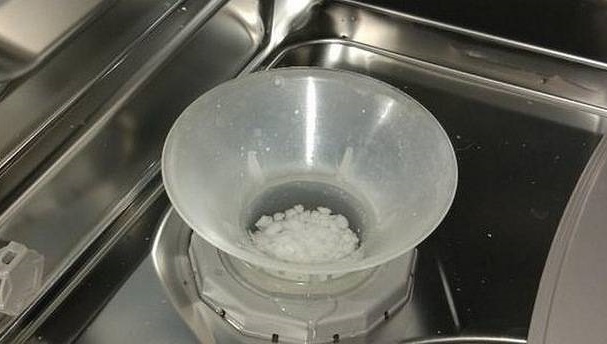
In regions, tap water has different hardness levels. You can measure the indicator using special test strips. Based on this, salt intake is regulated.
After setting up the softener, load the salt into a special container. It is located at the bottom of the washing chamber. For the first time, the tank needs to be filled with water, and then the granules should be poured into it. Excess liquid will come out under pressure.
Immediately after filling the container with salt, you must run a test cycle. Otherwise, filters, pumps and other PMM elements may be damaged by salt water. Such a breakdown will not be considered under warranty.
It is not necessary to use rinse aid, but many housewives use it to add shine to the dishes and speed up the further drying of the utensils. The dispenser for it is located inside the door, next to the detergent tray. Open the lid and pour the mixture until the indicator turns completely black. The section volume on Weissgauff machines is approximately 110 ml.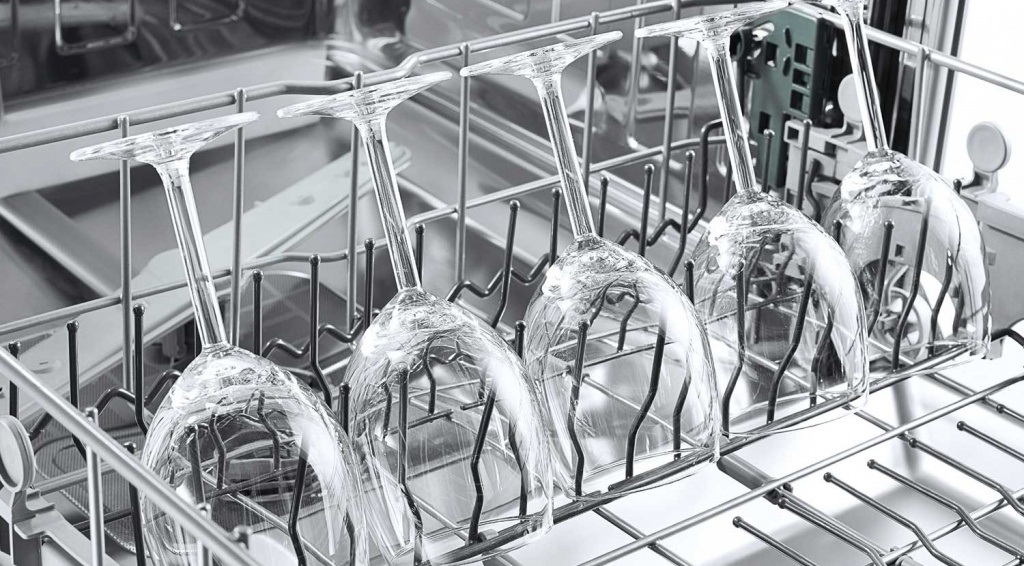
Detergents are necessary for cleaning dishes, removing grease and dirt from them. You can purchase 3 in 1 capsules for dishwashers, gel or special powder. Each type has its own advantages and disadvantages.
It is allowed to use only household chemicals designed specifically for PMM; ordinary dishwashing detergents can ruin the equipment.
The cleaning agent tray is located inside the door. One tablet will be enough per cycle. The dosage of the powder or gel should be looked at on the packaging.
How to load PMM correctly?
The Weissgauff dishwasher manual describes how to properly place dishes in the cooking chamber. Dishwashers are equipped with an upper and lower basket, as well as a cutlery tray. In order for the washing to be of the highest quality, it is necessary to correctly load products into the PMM.
Before loading dirty dishes into the machine, it is recommended:
- clean off any remaining food from the surface of the plates;
- soften the burnt layer in frying pans or pots;
- remove all garbage - fruit pits, tea bags, toothpicks, etc.
It is recommended to place dishes in Weissgauff machines as follows:
- glasses, tureens, mugs, pots, stewpans are placed bottom up;
- deep dishes should be placed at an angle so that water drains and does not accumulate inside;
- it is important to load the dishes so that they do not wobble and cannot tip over during the washing process;
- cutlery should not interfere with the rotation of the nozzles;
- be sure to leave a gap between the dishes so that the products are washed from all sides;
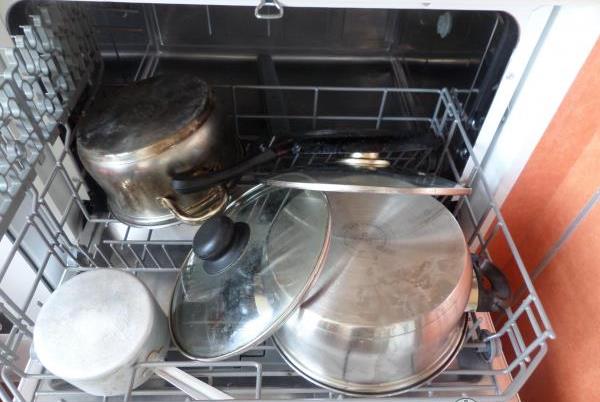
- large, heavily soiled items can only be loaded into the lower tray;
- the top tray is designed to accommodate light, thinner dishes: glasses, mugs, saucers;
- the plates are placed in the lower basket with the inside facing the middle of the tray; the larger the diameter, the closer to the edge the products should be placed;
- sharp knives are laid out horizontally in the upper basket;
- Do not overload the machine, this can lead to poor washing quality.
Weissgauff machines can adjust the level of the baskets. This is convenient if, for example, you need to place a tall pan underneath. How to set the desired position of the trays is described in detail in the instructions for the PMM.
There is a separate pull-out section for cutlery. It is located above the upper basket. The design makes it easy to remove the tray for loading. Spoons, knives and forks are laid out horizontally; it is important to ensure that they are not nested inside each other.
Some Weissgauff models have a cutlery basket instead of a tray. Spoons and forks are placed vertically in it. They need to be placed randomly so that objects do not overlap each other.
Weissgauff dishwashers also have glass holders. They are necessary for fixing the wine glasses so that they do not tip over under the pressure of water. It is important to secure such fragile items securely before starting the cycle.
Also, the instructions for the equipment say which dishes should absolutely not be loaded into the machine. These are wooden cutlery, items made of non-heat-resistant plastic, old plates with glued parts, copper and pewter items, and lead crystal.
Launching PMM, changing and ending the program
The first start of the PMM should be idle - without dishes in the chamber. The test cycle is necessary to wash the equipment from the inside, from factory dirt. It will also provide an opportunity to observe the operation of the dishwasher and identify problems if any.
The first test run is carried out without dishes, but with detergent.
Also, salt should already be poured into the machine. The idle cycle is performed on a high-temperature program, with water heated to 60 degrees. Select the appropriate mode.
If the first launch went well, further use of the dishwasher is possible. Pull out the upper and lower baskets, arrange the dishes in them, following the recommendations given. Add detergent to the tray.
Next, plug in the machine. Press the On/Off key. Then select the washing algorithm, the sequence of programs on Weissgauff dishwashers is as follows: “Economic”, “Glass”, “1 hour”, “Fast”, “Auto”, “Intensive”, “Normal” (for models with seven modes). Then close the door until it clicks, and the PMM will start working.
The running algorithm can be changed if a little time has passed since the beginning of the cycle. To do this, open the machine door slightly and hold down the program selection button. After 3-5 seconds the dishwasher will go into standby mode. After this, change the mode to the desired one and start the wash again.
You can add dishes to the machine as long as the detergent dispenser lid is not completely open. For this:
- open the PMM door slightly;
- wait until the machine’s sprinklers stop working;
- open the door completely;
- add dishes and close the PMM door;
- wait for the machine to resume operation (this should happen in 10 seconds).
The Weissgauff machine will notify you of the end of the cycle with a sound signal. Turn off the dishwasher by pressing the On/Off button. Open the door slightly and wait for the dishes to cool and dry.
Next, unload the baskets, first the bottom, then the top. After this, clean the filter of the machine from debris and wipe the walls of the washing chamber dry. Leave the PMM door ajar for ventilation.
Interesting:
Reader comments
- Share your opinion - leave a comment
Categories
Washing machine repair


For buyers

For users

Dishwasher


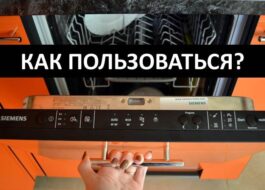
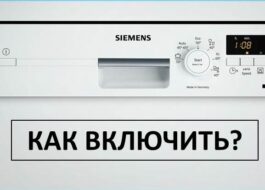
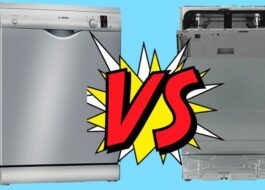

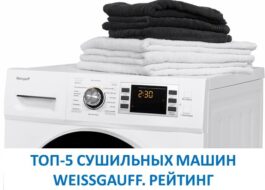










Add a comment